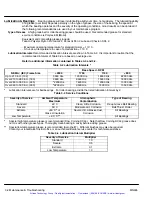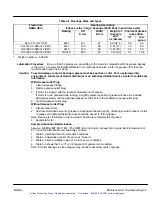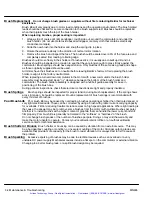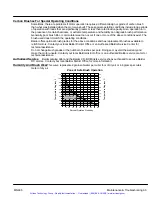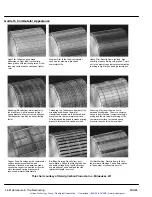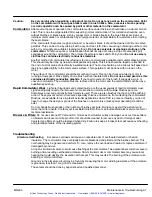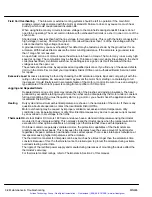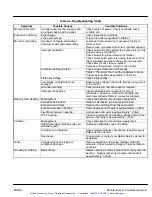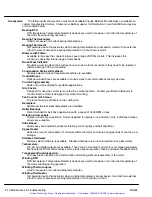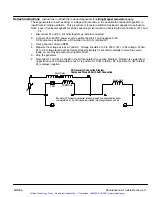
2-2 Installation & Operation
MN605
Doweling & Bolting
After proper alignment is verified, dowel pins should be inserted through the motor feet into the
foundation. This will maintain the correct motor position should motor removal be required. (Baldor
motors are designed for doweling.)
1. Drill dowel holes in diagonally opposite motor feet in the locations provided.
2. Drill corresponding holes in the foundation.
3. Ream all holes.
4. Install proper fitting dowels.
5. Mounting bolts must be carefully tightened to prevent changes in alignment. Use a flat washer and
lock washer under each nut or bolt head to hold the motor feet secure. Flanged nuts or bolts may be
used as an alternative to washers.
WARNING:
Guards must be installed for rotating parts such as couplings, pulleys, external fans, and unused
shaft extensions, should be permanently guarded to prevent accidental contact by personnel.
Accidental contact with body parts or clothing can cause serious or fatal injury.
Guarding
Guards must be installed for rotating parts such as couplings, pulleys, external fans, and unused shaft
extensions. This is particularly important where the parts have surface irregularities such as keys, key
ways or set screws. Some satisfactory methods of guarding are:
1. Covering the machine and associated rotating parts with structural or decorative parts of the driven
equipment.
2. Providing covers for the rotating parts. Covers should be sufficiently rigid to maintain adequate
guarding during normal service.
Power Connection
Motor and control wiring, overload protection, disconnects, accessories and grounding should
conform to the National Electrical Code and local codes and practices. Ground the motor by attaching a
strap from an established ground point to the grounding bolt provided inside the conduit box.
Conduit Box
For ease of making connections, an oversize conduit box is provided. The box can be rotated 360
°
in 90
°
increments.
Power
Connect the motor leads as shown on the connection diagram located on the name plate or inside the
cover on the conduit box. Be sure the following guidelines are met:
1. DC power is within
±
5% of rated voltage (not to exceed 600VDC). (See motor name plate for ratings).
OR
2. DC field power is within
±
1% of rated voltage.
Motor Connections
Terminal connections should be made as specified. See the connection diagrams located in
Section 4 of this manual. Tables 2
−
1 and 2
−
2 show the NEMA standard lead markings and the Accessory
Markings.
Table 2
−
1 NEMA Standard Lead Markings
Lead Markings
Motor
Armature
A1, A2
Field (shunt)
F1, F2, F3, F4, etc.
Field (series)
S1, S2
Thermostat
P1, P2, etc.
Space Heater
H1, H2, H3, H4, etc.
Resistance Temperature Detector (RTD)
R1, R2, R3, R4, etc.
Optional Brush Monitor System
A1Probe, A2Probe
Artisan Technology Group - Quality Instrumentation ... Guaranteed | (888) 88-SOURCE | www.artisantg.com

















